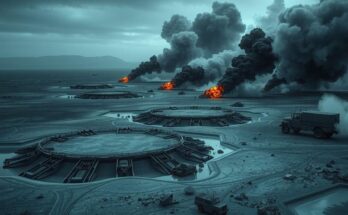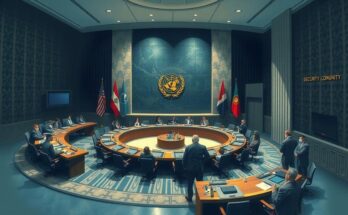The eastern DRC has experienced prolonged conflict, largely influenced by the Rwandan genocide. The M23 rebel group has entered Goma, aiming for control over its valuable mineral resources, amidst historical ethnic tensions. Rwanda’s possible involvement complicates the situation, reflecting ongoing regional conflicts related to security and resource management.
The eastern region of the Democratic Republic of Congo (DRC), rich in minerals, has faced ongoing conflict for over 30 years, exacerbated by the aftermath of the 1994 Rwandan genocide. Various armed groups have vyed for power and control over the considerable mineral wealth, drawing in neighboring countries and causing significant loss of life during the two significant conflicts known as Africa’s World Wars.
Currently, the M23 rebel group has made significant advancements, seizing Goma, a critical city with a population exceeding one million. Located at the border with Rwanda and adjacent to Lake Kivu, Goma serves as a crucial hub for trade, particularly in valuable minerals such as gold, tin, and coltan, essential for modern electronics. While the M23 claims full control over Goma, Congolese authorities assert their military retains control of essential areas.
The M23, comprised primarily of ethnic Tutsis, asserts that its actions are to defend the rights of their minority community. They derived their name from a peace agreement signed on March 23, 2009, which they claim has been repeatedly violated. Initially created in 2012, the M23 rapidly captured territory, including Goma, leading to international condemnation and allegations of war crimes. After a series of defeats, they integrated into DRC’s army but re-armed in 2021, citing broken promises on protections for Tutsis.
Rwanda’s involvement remains contentious, as it has historically denied supporting the M23 despite allegations from UN experts suggesting otherwise. A UN report indicated the presence of Rwandan troops aiding the M23. Rwanda acknowledged that the fighting near its border represents a threat to its security but refrained from explicitly confirming support for the rebels, attributing blame to DRC’s government for not engaging in dialogue.
The conflict’s roots extend to the Rwandan genocide, where around 800,000 mostly Tutsi individuals were killed, leading to a mass exodus of Hutus into DRC. This sparked ethnic tensions, particularly among the marginalized Banyamulenge Tutsi group. Rwanda has launched incursions into DRC, claiming to pursue genocide perpetrators, and continues to address the threat posed by the Democratic Forces for the Liberation of Rwanda (FDLR), a Hutu militia active in the region. Rwanda perceives the FDLR’s existence as a substantial security challenge, often accusing DRC’s government of collusion with this group.
Rwanda’s involvement in DRC is likely to persist until it perceives its security is guaranteed and potential threats against Tutsi communities, including the FDLR, are neutralized. There are widespread suspicions that Rwanda exploits the ongoing conflict to benefit from DRC’s rich mineral resources.
In summary, the conflict in the Democratic Republic of Congo is deeply rooted in historical ethnic tensions dating back to the Rwandan genocide. The M23 rebel group’s resurgence highlights unresolved grievances, while Rwanda’s alleged support raises concerns over regional stability. The complex interplay of local and regional dynamics continues to fuel violence and instability in a valuable and resource-rich area of Africa.
Original Source: www.bbc.co.uk




